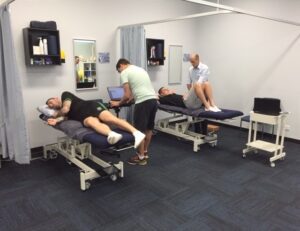Running Injuries
Running is one of the most popular physical activities in Australia, with millions of people regularly lacing up their shoes. While running offers incredible physical and mental benefits, it also comes with the risk of injury. Approximately 25% of runners experience injuries, often affecting the hips, knees, ankles, and feet. These injuries usually stem from sudden changes in workload or improper running techniques.
Read: Running Injuries and Prevention | Common Running Injuries
Why Do Runners Get Injured?
Despite our body’s ability to run efficiently, many runners struggle with injuries. Most injuries occur due to overtraining or abrupt changes in terrain, footwear, or intensity. Muscles, tendons, and bones adapt well to gradual increases in workload, but when the intensity ramps up too quickly, the body struggles to keep up. These factors lead to the development of injuries, which can often set back a runner’s progress.

How to Resolve Running Injuries?
The key to resolving running injuries lies in identifying the root cause. A physiotherapist will assess your running biomechanics, footwear, and training load. By addressing these factors, they create a personalised treatment plan that includes stretching, strengthening exercises, and possible cross-training while healing. Resolving these issues early prevents chronic problems and allows runners to return to their routines faster.
Read: Running Injury Treatment Options
Injury Prevention Tips for Runners
To prevent running injuries, focus on maintaining a well-rounded training regimen that includes a gradual increase in intensity and volume. Warm-up routines tailored to your body, proper footwear, and correct running techniques are vital. The 10% rule—only increasing your training volume by 10% per week—helps avoid overuse injuries. Listening to your body and taking action at the first sign of pain can prevent long-term issues.
Read: Running Injury Prevention | Warm-Up Techniques for Runners
Performance Enhancement Advice
For runners looking to enhance performance, strength training, and flexibility exercises are crucial. Building core stability and lower limb strength improves efficiency and prevents injuries. A physiotherapist can provide specific exercises that align with your goals, ensuring optimal performance without sacrificing health.
Read: Strengthening for Runners | Core Stability for Running
Injury Treatment and Rehabilitation
Physiotherapy is essential for treating running injuries. Treatments may include massage, dry needling, joint mobilisation, and exercise rehabilitation. Addressing the injured area and strengthening related muscles ensures a comprehensive recovery. A personalised rehabilitation plan speeds up recovery and minimises future injury risks.

Long-Term Health Considerations for Runners
Many athletes are concerned about the long-term effects of running on their joints and muscles. With proper injury prevention and treatment, running can remain a lifelong activity. Balancing running with other forms of exercise, like strength training and flexibility routines, helps maintain career longevity while reducing the risk of chronic pain.
Psychological Aspects of Running
The mental aspect of running is often overlooked but plays a crucial role in performance. Learning stress management techniques and building mental resilience helps runners stay motivated and focused. Addressing performance anxiety and learning coping strategies can significantly improve both enjoyment and performance.
Nutrition and Supplementation for Runners
Fueling your body with the right nutrition is key to peak performance and recovery. Runners should focus on carbohydrate intake, meal timing, and hydration strategies. Supplementing with electrolytes and maintaining proper hydration during long runs are essential for avoiding fatigue and improving performance.
Training Methods and Periodisation
Training for optimal running performance involves balancing endurance, strength, and skill work. Structured training programs, including tapering for competitions and off-season training strategies, help maintain peak condition while reducing the risk of injury. Physiotherapists can help develop a balanced training program that aligns with your goals.
What to Do Next?
If you suspect an injury, consult a physiotherapist promptly. Early intervention can minimise downtime and reduce the risk of long-term damage. The physiotherapist will develop a recovery plan, including strategies for improving strength, flexibility, and running form. This proactive approach ensures you return to running with fewer setbacks and improved performance.
Rochedale - Call 38410277
Book Online: RochedaleSalisbury - Call 32751044
Book Online: SalisburySandgate - Call 32691122
Book Online: SandgateFAQs
- Why do runners get injured?
Runners get injured mainly due to overtraining or improper form. Sudden increases in intensity or distance overload the body, leading to common injuries. - How can you prevent running injuries?
Gradual progression, proper footwear, and listening to your body are key strategies to prevent injuries. Strengthening exercises and warm-ups also play a vital role. - Who is most at risk of running injuries?
New runners, those returning after a long break, and runners who suddenly increase their training volume are at higher risk. - Where do most running injuries occur?
The most common injuries affect the knees, ankles, hips, and feet due to repetitive impact.Read more: Common Running Injuries
- When should you stop running with pain?
If pain persists beyond typical soreness, it’s time to stop and consult a physiotherapist or doctor to prevent worsening the injury.
Related Articles
- Running Injuries and Prevention
Discover how to prevent common running injuries and keep your running routine on track.
Social Media
Follow Us for Tips
For more tips on staying injury-free while running, follow us on social media for the latest advice on injury prevention, health, and wellness.

















































































